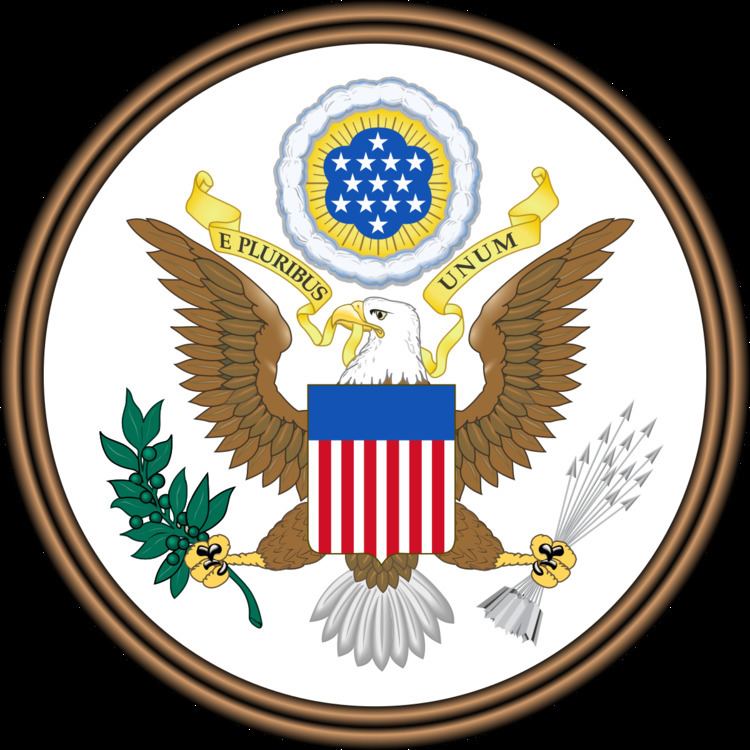Acronyms (colloquial) IEEPA Public law 95-223 | Effective December 28, 1977 Statutes at Large 91 Stat. 1625 | |
 | ||
Enacted by the 95th United States Congress | ||
The International Emergency Economic Powers Act (IEEPA), Title II of Pub.L. 95–223, 91 Stat. 1626, enacted October 28, 1977, is a United States federal law authorizing the President to regulate commerce after declaring a national emergency in response to any unusual and extraordinary threat to the United States which has a foreign source.
Contents
- Provisions
- Curtailment of Emergency Executive Powers
- IEEPA After 911
- Notable Cases
- IEEPA Violations
- Current subjects of IEEPA emergencies
- Past subjects of IEEPA emergencies
- References
The H.R. 7738 legislation was passed by the United States 95th Congressional session and signed by the 39th President of the United States Jimmy E. Carter on December 28, 1977.
Provisions
In the United States Code, the IEEPA is Title 50, §§1701–1707. The IEEPA authorizes the president to declare the existence of an "unusual and extraordinary threat... to the national security, foreign policy, or economy of the United States" that originates "in whole or substantial part outside the United States." It further authorizes the president, after such a declaration, to block transactions and freeze assets to deal with the threat. In the event of an actual attack on the United States, the president can also confiscate property connected with a country, group, or person that aided in the attack.
The IEEPA falls under the provisions of the National Emergencies Act (NEA), which means that an emergency declared under the act must be renewed annually to remain in effect.
Curtailment of Emergency Executive Powers
Congress enacted the IEEPA in 1977 to clarify and restrict presidential power during times of declared national emergency under the Trading with the Enemy Act of 1917 ("TWEA"). Under TWEA, starting with Franklin D. Roosevelt in 1933, presidents had the power to declare emergencies without limiting their scope or duration, without citing the relevant statutes, and without congressional oversight. The Supreme Court in Youngstown Sheet & Tube Co. v. Sawyer limited what a president could do in such an emergency, but did not limit the emergency declaration power itself. A 1973 Senate investigation found (in Senate Report 93-549) that four declared emergencies remained in effect: the 1933 banking crisis with respect to the hoarding of gold, a 1950 emergency with respect to the Korean War, a 1970 emergency regarding the postal workers strike, and a 1971 emergency in response to the government's deteriorating economic and fiscal conditions. Congress terminated these emergencies with the National Emergencies Act, and then passed the IEEPA to restore the emergency power in a limited, overseeable form.
Unlike TWEA, IEEPA was drafted to permit presidential emergency declarations only in response to threats originating outside the United States. Beginning with Jimmy Carter in response to the Iran Hostage Crisis, presidents have invoked IEEPA to safeguard U.S. national security interests by freezing or "blocking" assets of belligerent foreign governments, or certain foreign nationals abroad.
IEEPA After 9/11
Following the 9/11 terrorist attacks, President George W. Bush issued Executive Order 13224 under IEEPA to block the assets of terrorist organizations. The President delegated blocking authority to federal agencies led by the U.S. Treasury. In October 2001, Congress passed the USA PATRIOT Act which, in part, enhanced the IEEPA asset blocking provisions under §1702(a)(1)(B) to permit the blocking of assets during the "pendency of an investigation." This statutory change gave the Treasury's Office of Foreign Assets Control the power to block assets without the need to provide evidence of the blocking subject's wrongdoing nor to permit the blocking subject a chance to effectively respond to the allegations in court. Executing these blocking actions led to a series of legal cases challenging federal authority to indefinitely prevent charitable organizations from accessing their assets held in the United States.
Notable Cases
IEEPA Violations
Current subjects of IEEPA emergencies
As of 2015, the following IEEPA emergencies are active.
